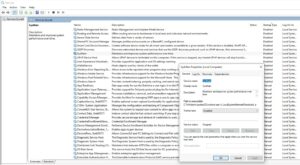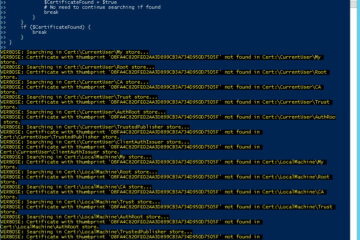Why Microsoft Renamed Superfetch to SysMain
Superfetch, a feature introduced by Microsoft in Windows Vista, was renamed to SysMain in later versions of Windows, starting with Windows 10. This change, while largely unnoticed by everyday users, marked a strategic update to improve the functionality and clarity of the Windows operating system. To understand the reasoning behind this change, it’s essential to explore the original purpose of Superfetch, the evolution of Windows memory management, and Microsoft’s efforts to make system processes more transparent and efficient.
What was Superfetch?
Superfetch was designed to enhance system performance by intelligently managing memory. It worked by preloading frequently used applications into memory based on user behavior. The idea was that by predicting which programs a user was likely to open, the system could load these programs more quickly, improving overall responsiveness. Superfetch constantly monitored usage patterns and adjusted its memory preloading algorithm to ensure optimal performance.
However, while Superfetch was beneficial in many cases, it wasn’t without its issues. On some systems, particularly those with older hardware, Superfetch could cause high disk usage, slowing down the system rather than speeding it up. This was especially true for users running systems with mechanical hard drives rather than solid-state drives (SSDs). As SSDs became more common, the need for aggressive preloading of data diminished, as SSDs could retrieve data much faster than traditional hard drives.
The Shift to SysMain
As Windows continued to evolve, particularly with the release of Windows 10 17763 and newer first released in October 2018 Update. Microsoft made several improvements to how memory and system resources were managed. In line with these improvements, the Superfetch service was rebranded as SysMain. This change wasn’t just about renaming a feature; it reflected a shift in how Windows handled background processes and system optimization.
SysMain continues the core functionality of Superfetch – optimizing the system for faster application load times – but with improvements that make it more efficient and less prone to the high disk usage problems seen with Superfetch. Microsoft refined the algorithms that manage preloading, making SysMain smarter and more adaptable to the increasingly common SSDs, which do not benefit from aggressive preloading as much as traditional hard drives did.
Why the Name Change?
- Clarity in System Processes: The renaming to SysMain was likely done to align the feature with its broader role in the system. “Superfetch” was a somewhat obscure name that didn’t clearly describe its purpose to most users. In contrast, “SysMain” suggests that this service plays a fundamental role in system maintenance, which better reflects its function of optimizing memory and resource usage across the system.
- Modernization of Windows: As Windows 10 and subsequent versions introduced more advanced memory and system management features, Microsoft aimed to streamline and modernize various system components. The renaming was part of a larger effort to ensure that system services were named in ways that more accurately reflected their role and importance in the OS.
- Avoiding Confusion: Over time, Superfetch had gained a reputation for causing performance issues on some systems, especially with hard disk drives (HDDs). By renaming the service to SysMain, Microsoft could distance the feature from its past associations while still delivering improved functionality.
Conclusion
The renaming of Superfetch to SysMain was more than just a cosmetic change; it was part of Microsoft’s efforts to enhance the performance and clarity of Windows’ memory management system. With the growing prevalence of SSDs and improved system optimization techniques, SysMain continues to serve a vital role in keeping Windows systems running smoothly, while avoiding some of the pitfalls that plagued Superfetch in earlier iterations.



0 Comments